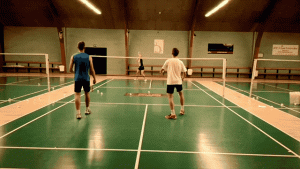
Among all kinds of sports, swing sports stand out because of its fun and interactivity and become the first choice of many people.
Compared with tennis and table tennis, badminton is easier to play, and you can easily exercise your whole body through running, jumping and other postures.
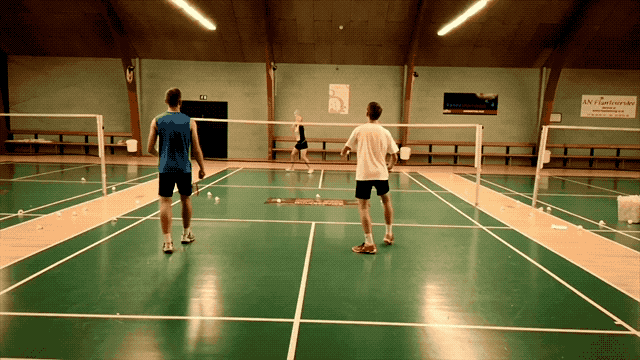
Badminton brings 4 benefits to the body
When playing badminton, the muscles of the whole body will exchange tension and relaxation in a short time, so as to keep up with the fast-flying ball.
It is just because of this sport mode that badminton brings 4 major benefits to the body:
Protecting blood vessel
British Journal of Sports Medicine once published an international study saying that in terms of cardiovascular protection, badminton and other swing sports ranked first.
The study analyzed the health data of more than 80,000 test participants in England and Scotland over the past 30 years.
The results show that swing sports such as badminton can reduce the death rate of cardiovascular diseases by 56%.
Relieving cervical spondylosis
People who work at desks for a long time or play with mobile phones often have the problem of stiffness and “crack” when moving. To relieve neck stiffness through exercise, the recommended exercise is to play badminton.
Because the neck needs to be turned back when playing badminton, it can help improve the stiffness and discomfort caused by the long-term fixed posture of the neck.

Losing fat
For people who are busy with work, playing badminton is a cost-effective sport. It requires both physical fitness and skills, and the overall health benefits are greater.
Making people happy
Badminton is both a kind of sport and entertainment. Whether it is singles or doubles, it gives people a sense of participation and can enhance social interaction.
In the process of playing, you can feel the interaction of catching the ball by running and changing your body posture. When the player wins the ball, there will be a sense of satisfaction, which can greatly delight the body and mind.
Please protect those body parts when playing badminton.
Badminton is a full-body sport and requires reasonable use of moving, jumping, turning, and swinging. In the process of hitting the ball, if the action is not standardized, the body is prone to the following injuries:
Heel
The plantar fascia and Achilles tendon of the foot are equivalent to springs. Each time you jump to smash, these two parts will bear a lot of force. Long-term exercise or improper posture can cause heel inflammation or injury.
The most common is plantar fasciitis, which is often caused by excessive upward jumping force. Achilles tendon rupture is considered more serious in heel injuries. Many of them are caused by not receiving systematic exercises or insufficient warm-up.
Ankle
When playing badminton, there are a lot of forward and backward movement and lateral movement. In order to catch the ball steadily, accurately and ruthlessly, the moving speed will be very fast. Such rapid movement can easily cause ankle sprain.
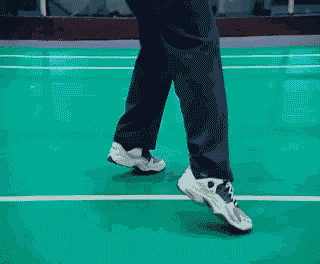
If you do long term exercise and do not pay attention to it, the ankle joint is sprained repeatedly, it may develop into arthritis after a few years.
The ligaments around the ankle joint and the ankle joint capsule are damaged, causing joint instability and joint pain. In severe cases, surgery is required.
Shoulder joint
Playing badminton is an up-over-shoulder sport, that is, the movement position of the wrist and elbow exceeds the shoulder. If keeping over-shouldering movement for a long time, which can easily lead to shoulder fatigue.
When the power point is wrong or when raising the arm to hit the ball too suddenly, the impact of the own humerus and the acromion may cause subacromial bursitis, medial humeral condyle, etc.
People with bad knees should play badminton less
When playing badminton, it is necessary to repeatedly rub, impact or squeeze the knee joint. For people with knee joint injuries, it will increase the degree of wear.
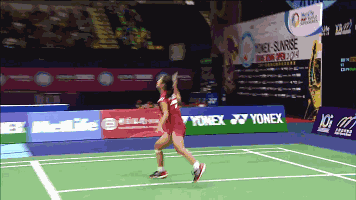
In the event of an emergency stop, emergency change of direction, fall, stepping on the air, etc., if the impact force makes the knee tibia valgus (usually accompanied by external rotation of the tibia), it is easy to cause medial collateral ligament injury. 20%~70% of medial collateral ligament injuries are accompanied by other ligament injuries.
For example, the medial collateral ligament is deeply attached to the medial meniscus, so 5% of medial collateral ligament injuries will be accompanied by a tear of the medial meniscus.
In addition, anterior cruciate ligament injury combined with medial meniscus injury is also more common, mainly due to excessive knee joint extension or valgus.
3 tips to make it safer to play badminton
When playing badminton, in addition to learning professional movement specifications, you must also master several sports skills to avoid sports injuries.
Before playing
Warming up to move joints
Because badminton has high requirements for the intensity of joint activities, a sufficient warm-up before playing can avoid most sports injuries.
Before playing, you must fully move the muscle groups and joints that may be used in the exercise in advance. There are two main exercises:
Practice lunges to move quickly and accelerate jumping to improve the flexibility of the lower limbs;
Upper body warming up involves rotation and stretching of the shoulders, elbows, and wrists.
It is generally believed that the warm-up time is best to account for 10%-20% of the total exercise time. For example, for 1 hour of aerobic exercise, the warm-up time should be in the range of 6-12 minutes.
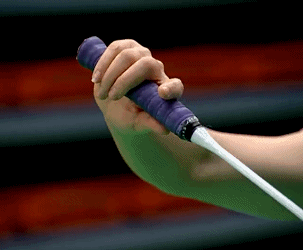
Must not raise your head suddenly in exercise
Avoid or reduce mechanical movements. If you feel partial elbow soreness, you should stop and do a stretch.
It is best to wear elbow pads and knee pads when possible. In addition, it is best to learn standardized movements to avoid sports injuries.
In addition, when playing badminton, the most taboo is to raise the head sharply. The neck is bent and the angle of neck extension is increased, which will undoubtedly increase the load on the neck. A little carelessness may cause certain damage to the neck and back.
Therefore, when playing at close quarters, the ball should be over the top of the head. Don’t raise your head sharply or bow your back to catch the ball to avoid injury.
Stretch muscles in static after exercise
After the game is over, do not rest immediately, but perform static stretching to allow the muscles to gradually recover from the tense state to avoid sports injuries caused by a sudden stop.
Focus on stretching the arms, waist, legs, ankles and other parts, and pat the hands to relax the muscles.
Choosing a pair of good rackets mainly depends on 4 points
A good racket is not only an assist for playing ball well, but also to avoid injuries during sports. Some starters may have a misunderstanding about buying rackets.
The following 4 tips will help you choose a pair of handy badminton rackets.
Racket weight: The weight of the most used all-carbon racket is 90~94g or 85~89g, the latter is more suitable for the ordinary people to exercise.
For beginners or people who do not exercise regularly, it is easy to hurt the wrist with a racket that is too heavy.
The softness of the handle: after you get the racket, wave it to see if it shakes your hands. Shaking hands means that the handle is too hard, otherwise it has better elasticity.
Generally speaking, the greater the hardness, the better the control and the greater the strength, but it is difficult for amateur players to play, so you should choose the type with moderate flexibility.
Racket string: The string of a lower-pound racket is looser, and it is obvious that the ball has time to stay on the racket surface when hitting the ball, and the direction of the ball cannot be controlled well.
High-pound rackets are very professional, and only professional athletes can handle them well. It is recommended that women who do not exercise regularly use 20 pounds, beginners use 20 to 23 pounds, and those with intermediate skills are suitable for 23 to 25 pounds.
Material: It is recommended to use all-carbon and carbon fiber rackets. It is best not to buy cheap aluminum rackets. The advantages of carbon fiber rackets are not only lighter in weight, but also better in strength and hardness than aluminum rackets, and can withstand heavier strings.
Comments